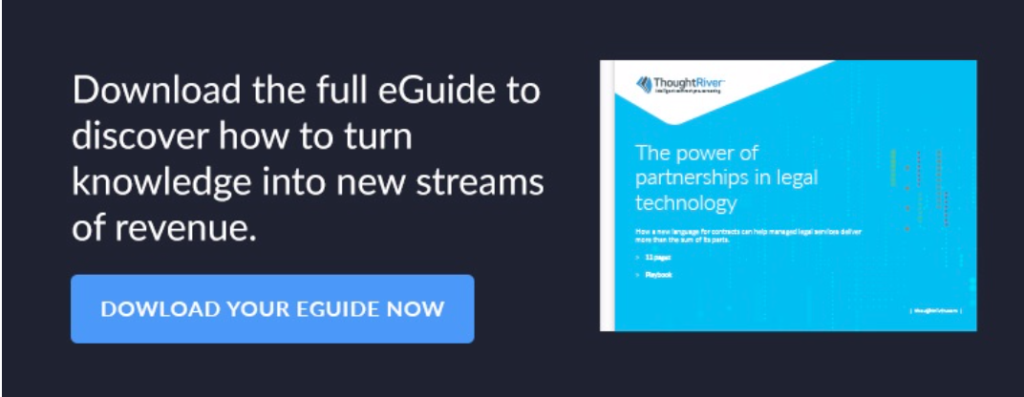
By ThoughtRiver
Managed legal services have been widely hailed as the arrival of the new model of legal services provider.
Forward-thinking law firms have enthusiastically embraced the steady revenue streams and long-term relationships that come from this.
However, it is surprising that so many of these firms are currently missing opportunities to generate value from the bespoke knowledge generated from these partnerships. With the right technology, a managed service relationship can become much larger than the sum of its parts, with benefits for both client and legal practice.
Certainly, businesses operating in this space are making much of their credentials as an alternative and often tech-enabled legal service providers.
Typically this goes with a startup-flavoured brand name – Addleshaw Goddard’s AG Optimise or Eversheds Sutherland’s Ignite are prime examples. And of course managed services is a prime focus of activity for the Big Four: PwC Legal announced its Flexible Legal Resources offering back in 2017.
What is less clear is how the services being provided differ much from either legal process outsourcing at the low end of sophistication and conventional panel firm relationships further up the scale. In theory, managed legal services involve the formal transfer of workstreams or even entire teams on multi-year scaleable contracts. (One recent example of this may be telecoms giant BT’s ‘strategic partnership’ with DWF under which dozens of lawyers could move to the international firm.)

Download your ThoughtRiver e-guide: The power of partnerships in legal technology
More than just a question of trust
For both sides, the attraction of evolving from the hourly billing world are plentiful. The client benefits from cost reduction and certainty, and the knowledge that resources will be on tap for time-critical and high-risk work. The managed legal service model introduces transparency, efficiency – and the chance to introduce technology on a scale that might not be feasible for a single in-house team.
For its part, the providing firm benefits from certainty of cash flow with the consequent ability to tackle with confidence the single biggest question that law firm managers ask – how, when and where to bring new talent on board.
Overall, moving into managed legal services is a relatively pain-free way of transforming a partner-centric practice into a robust and professionally managed business.
Despite the obvious plus points, there is a tentative air to many legal services provider arrangements, perhaps reflected in the rapid turnover of provider.

This should not be the case. After all, a managed services model removes at a stroke the ancient source of tension between lawyer and client, the suspicion (however unjust) that the professional has an incentive to introduce complexity and more billable hours into any given issue. With a properly drafted and managed outcome-measured services contract, both sides know that the incentive is on the provider to generate efficiencies, consistent with quality of service.
But this is only the beginning of the partnership. Inevitably, the relationship between client and managed services provider generates knowledge, specific to the client or perhaps the business sector in which they operate, for example shipping or utilities.
At the moment, for obvious reasons, this knowledge is locked up in transactional records, predominantly contracts. But what if the specific knowledge accumulated in the creation of contracts could be captured to generate more value from the relationship, while of course adhering to the demands of professional privilege?
That is the possibility created by a new way of working with legal language.
Download your ThoughtRiver e-guide: The power of partnerships in legal technology:

[ Artificial Lawyer is proud to bring you this sponsored article by ThoughtRiver. ]